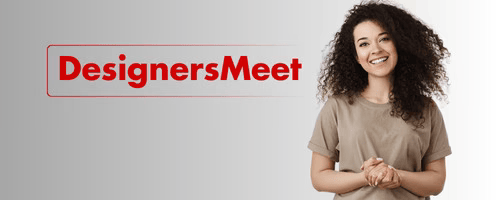Color is one of the most powerful tools in a designer’s toolkit. It influences mood, draws attention, and communicates brand values. Understanding color theory allows designers to create harmonious and effective visuals that resonate with their audience.
In this blog, we’ll explore the basics of color theory, how to apply it in your designs, and tips for using color strategically.
What is Color Theory?
Color theory is a set of principles used to create pleasing color combinations. It involves understanding the color wheel, color harmonies, and the psychological effects of colors.
The color wheel, developed by Isaac Newton, organizes colors into primary, secondary, and tertiary groups. Knowing how these colors interact helps designers make balanced color choices.
Keyword Highlight: color theory basics, color wheel, color harmonies
Primary, Secondary, and Tertiary Colors
-
Primary Colors: Red, blue, and yellow. These colors cannot be created by mixing others.
-
Secondary Colors: Green, orange, and purple. Made by mixing two primary colors.
-
Tertiary Colors: Colors formed by mixing a primary and a secondary color (e.g., red-orange).
Understanding these basics helps you select and mix colors effectively.
Keyword Highlight: primary colors, secondary colors, tertiary colors
Color Harmonies
Color harmonies are combinations that are visually appealing. Common types include:
-
Complementary Colors: Opposite colors on the wheel (e.g., red and green). They create contrast and vibrancy.
-
Analogous Colors: Colors next to each other (e.g., blue, blue-green, green). They create calm and cohesion.
-
Triadic Colors: Three evenly spaced colors forming a triangle (e.g., red, yellow, blue). They balance contrast and harmony.
-
Monochromatic Colors: Variations of a single color using different shades and tints.
Keyword Highlight: complementary colors, analogous colors, triadic color scheme, monochromatic palette
Psychology of Colors
Colors evoke emotions and perceptions. For example:
-
Red: Energy, passion, urgency
-
Blue: Trust, calm, professionalism
-
Yellow: Happiness, attention, optimism
-
Green: Growth, health, tranquility
-
Black: Sophistication, power, elegance
Choosing colors that align with your brand message improves communication.
Keyword Highlight: color psychology in design, emotional impact of colors, brand color meanings
Applying Color Theory in Design
-
Choose a Base Color: Start with a color that fits your brand or message.
-
Select Supporting Colors: Use harmonies to pick complementary or analogous colors.
-
Consider Contrast: Ensure text is readable by having enough contrast between background and font colors.
-
Use Neutrals: Whites, blacks, and grays balance out bright colors.
-
Limit Your Palette: Stick to 3-5 colors to avoid overwhelming your design.
Keyword Highlight: color palette selection, color contrast in design, neutral colors
Tips for Using Color Effectively
-
Test your color choices on different devices to ensure consistency.
-
Use color to guide user attention—like buttons or calls to action.
-
Be mindful of cultural differences in color meanings.
-
Use tools like Adobe Color, Coolors, or Paletton for palette creation.
-
Avoid clashing colors to maintain professionalism.
Keyword Highlight: effective color use, color accessibility, design color tools
Color Trends in Design
Stay updated with current color trends like:
-
Pastels for softness and calmness
-
Bold and bright colors for energy and youthfulness
-
Muted and earthy tones for natural, organic feel
Trends change but fundamentals of color theory remain the foundation.
Keyword Highlight: color design trends, pastel color schemes, earthy color palettes
Conclusion
Mastering color theory in design is essential for creating impactful and memorable visuals. By understanding the color wheel, harmonies, and psychology behind colors, designers can craft designs that communicate clearly and attract the right audience.
At DesignersMeet.com, we encourage designers to experiment with colors thoughtfully and stay informed about trends while sticking to solid color principles.




